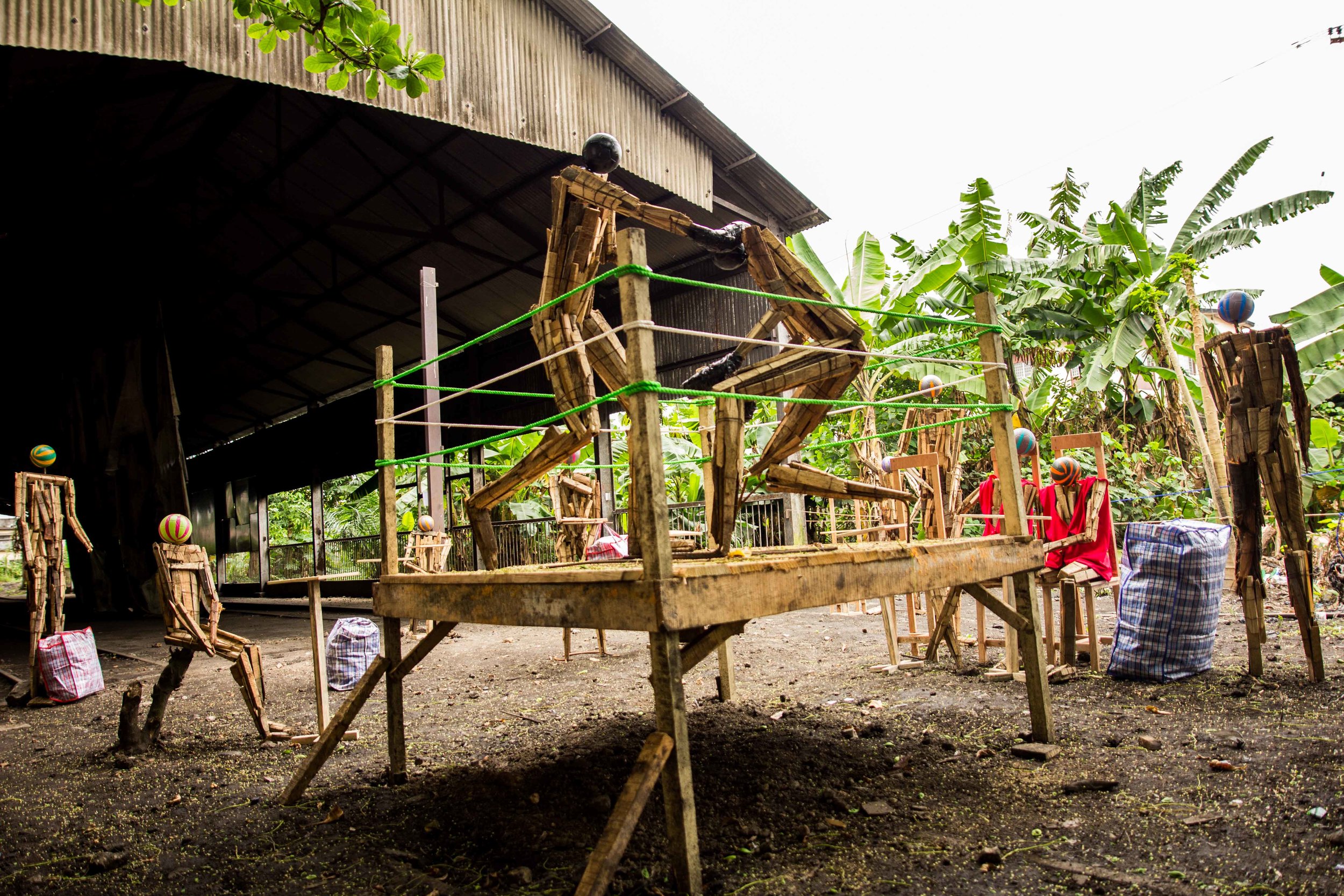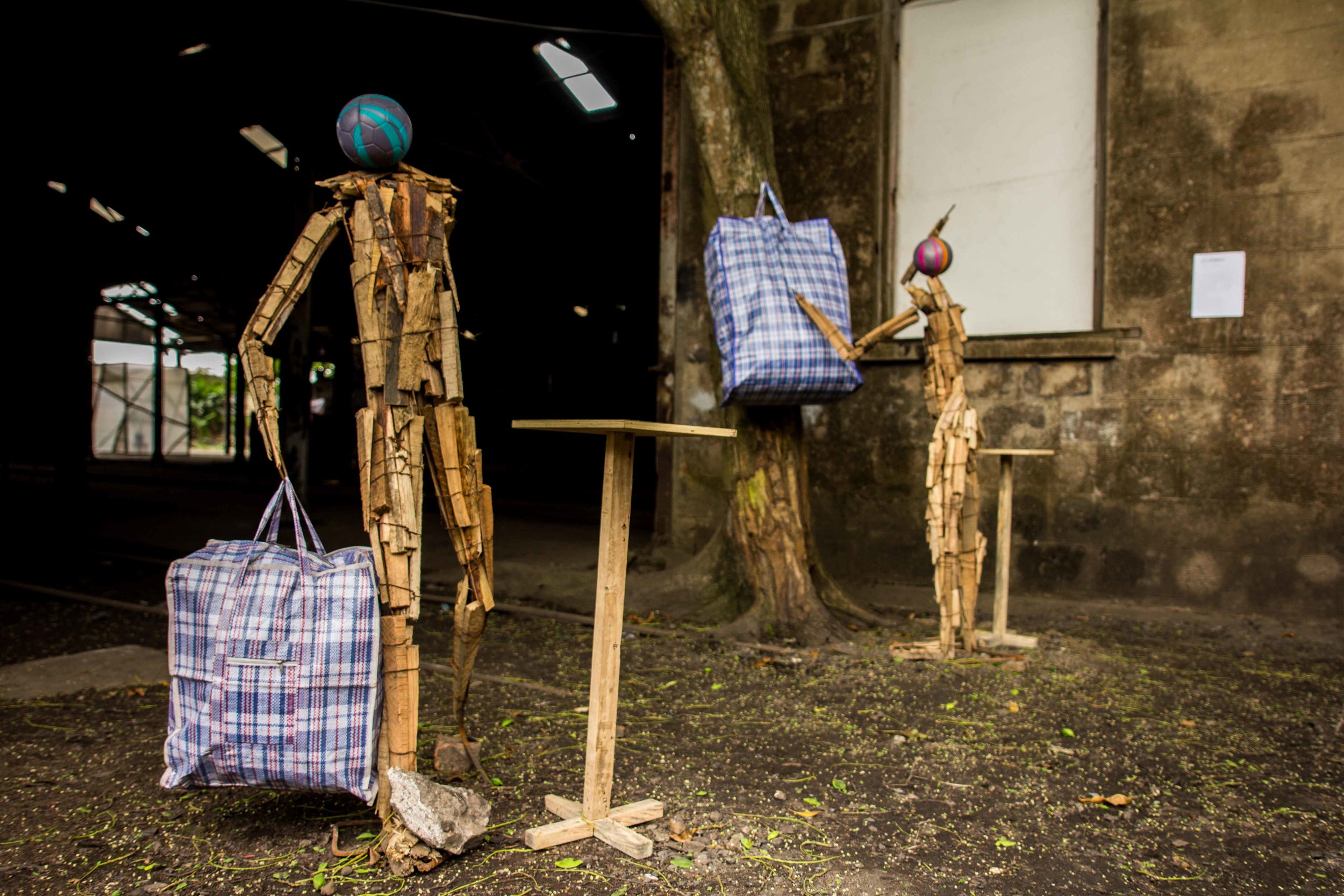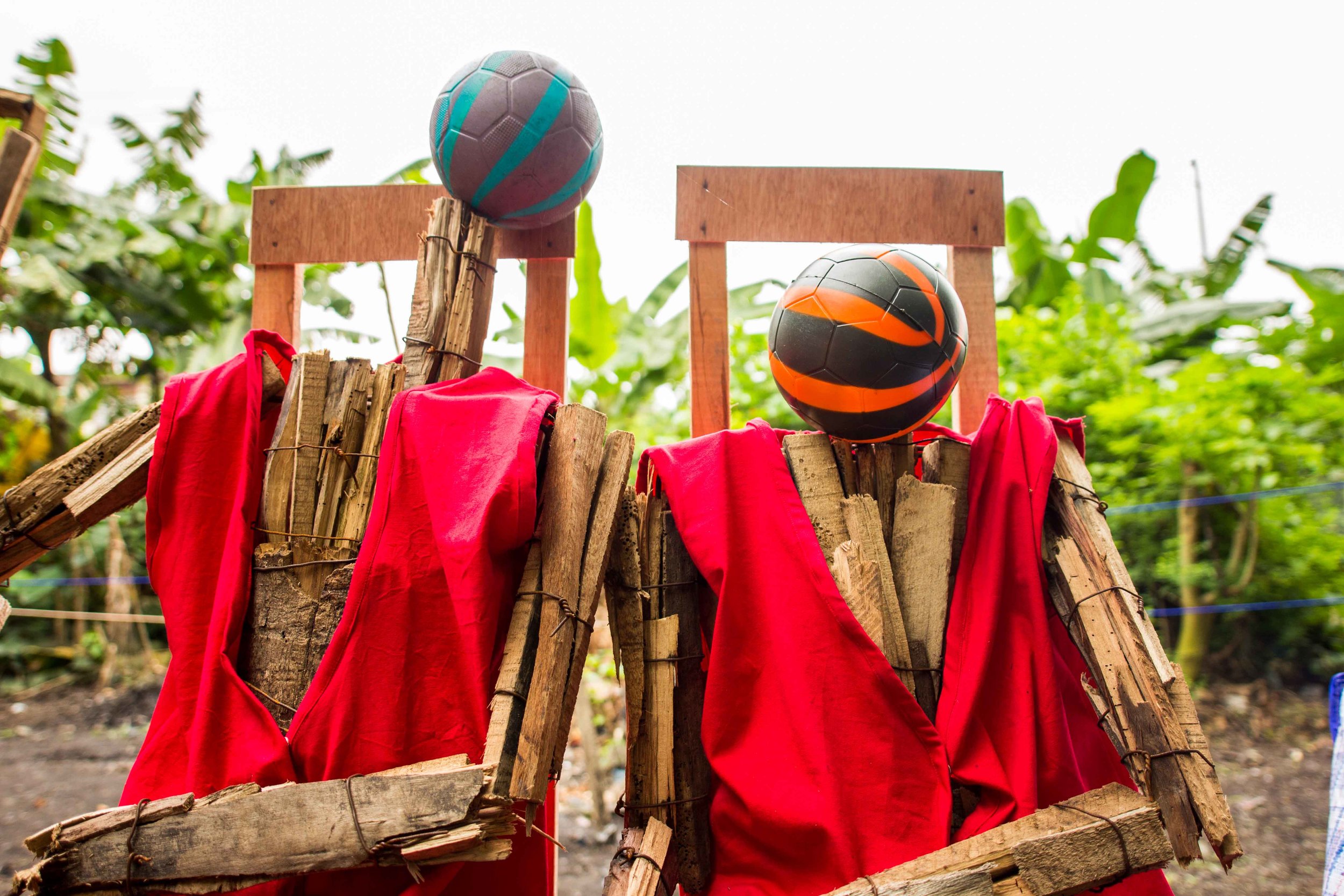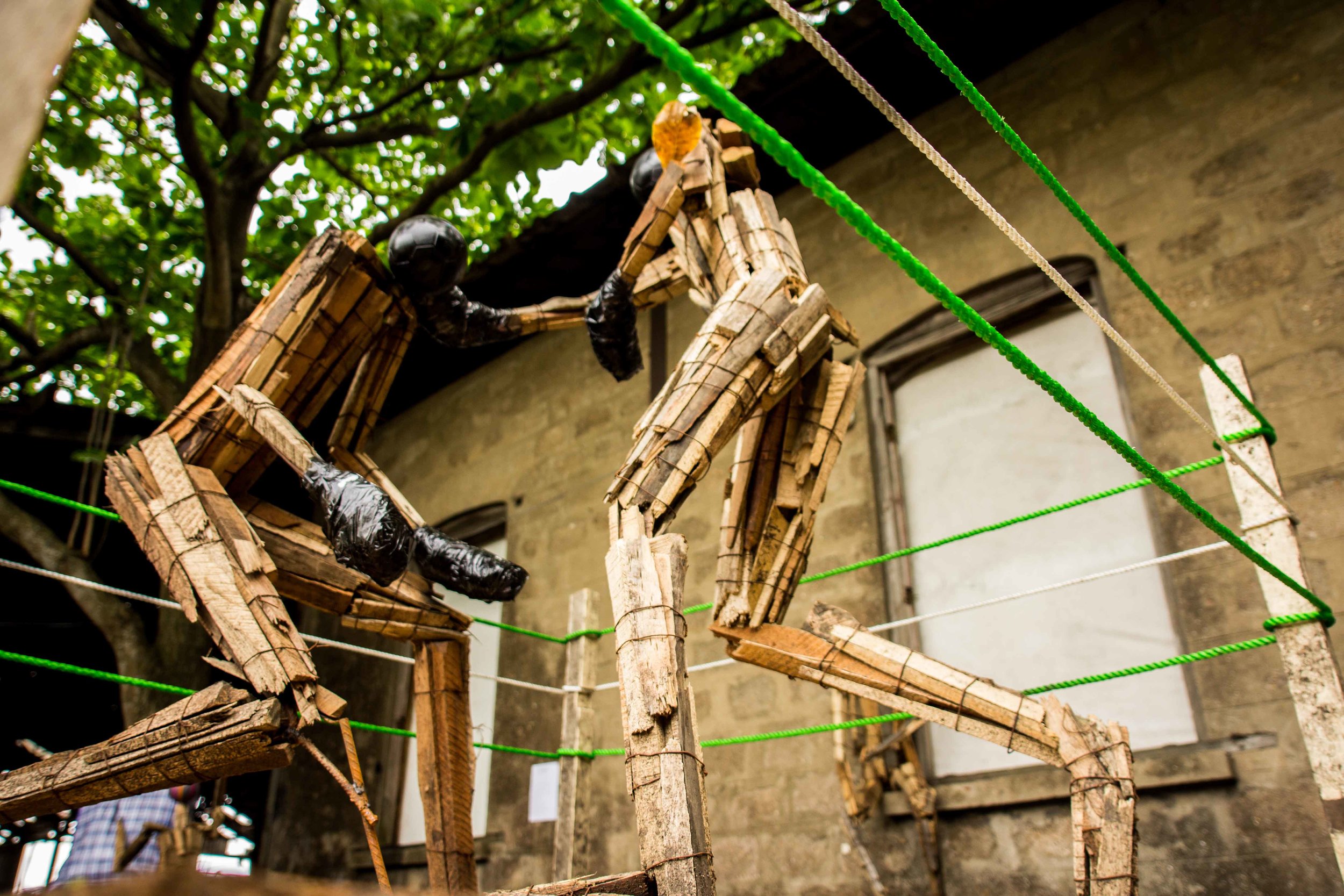



Deaf Vs Dumb
Lagos Biennial 2017
Nigerian Railway Museum, Lagos (Nigeria)
14 Oct - 22 November 2017
Deaf vs. Dumb, a site-specific installation, takes its point of entry from the unending campaign “fight against corruption” by the Nigerian government. Evident in the title and representation of the concept, it is a satirical commentary on the relationship between the government and the people, where the government is deaf and the people are dumb. Multi-layered and created in the framework of a boxing bout, the installation incorporates key elements in the game of boxing and highlights familiar political and economic issues within the Nigerian landscape. The central piece is a boxing ring that measures 36sq ft. In total, there are 12 sculptural pieces and a sound installation.
Acting as a metaphor, the boxing ring is Nigeria, a strong country but a battleground with constant frictions between the government and the citizens. While the figures inside the ring are the centre of attraction, the figures outside are equally important. They allude to the presence of the audience in a boxing arena and undertake different roles in the installation. The two figures seated and adorned in the officers’ vest of the Economic and Financial Crimes Commission (EFCC), a Nigerian law enforcement agency, represent the referees in this fight against corruption, while the use of the ‘Corruption Must Go’ bags which takes its reference from the mass deportation of Ghanaians from Nigeria in the 1980’s, deals with the subject of money laundering and other illegal financial practices. A number of popular news head- lines, lend credence to the history of corruption in the country.
Invoking the presence of another audience and players in the arena, the sound installation, an audio recording of actual conversations at different newspaper stands, points at the archetypal response of the people to the news around them. In their words and actions, what has changed?
Drawing on the study of anthropometrics and ergonomics, the materials, skeletal shapes of the figures and the space of installation are measured (or deliberate). The sculptural pieces components - iron rods, woods, binding wires - sourced from construction sites and easily too, implies the simplicity and possibility of nation building, as well as the contrasting nature of that process.
The figures, although vulnerable and fragile in appearance, are still standing and resisting, and attest to the boxing ring as the formidable structure that must be contested and constantly negotiated.